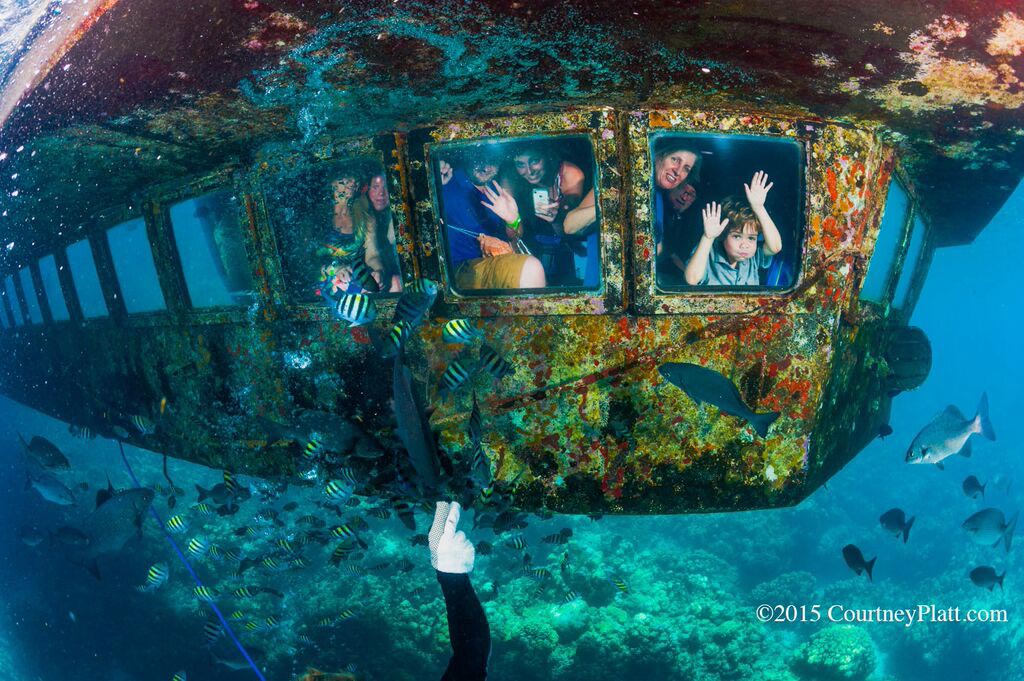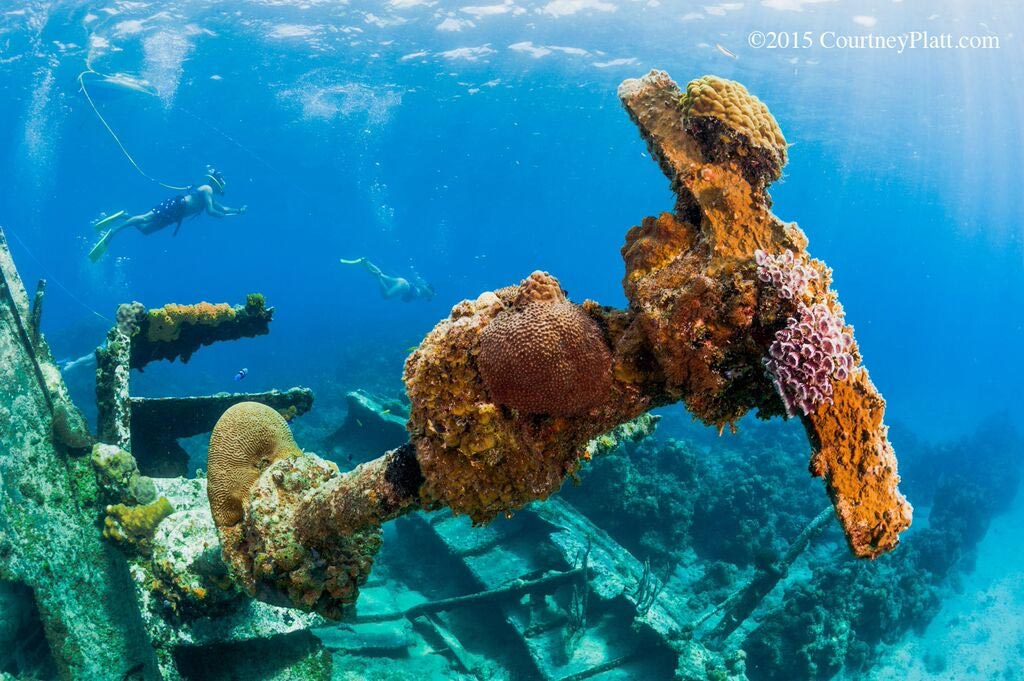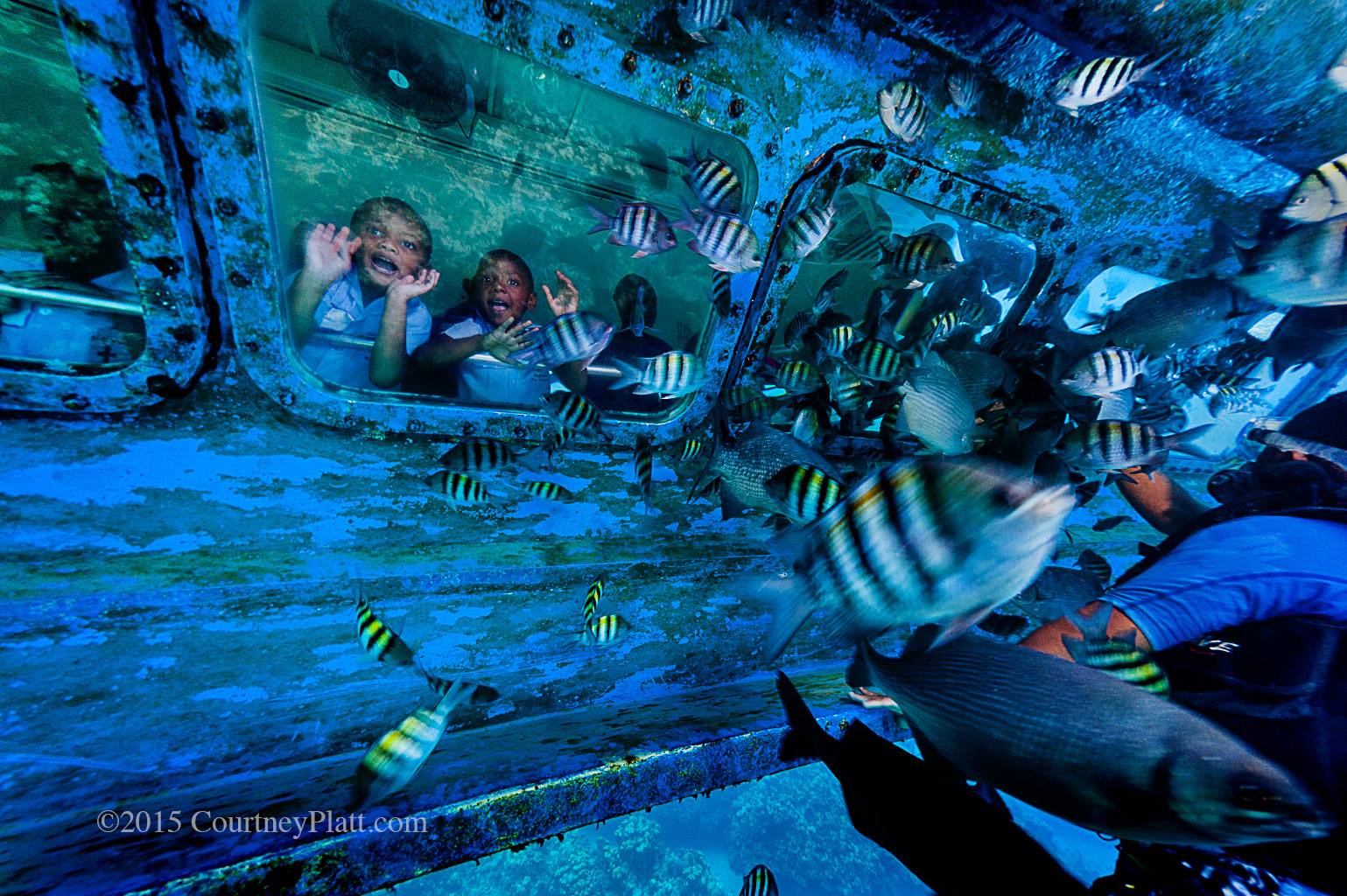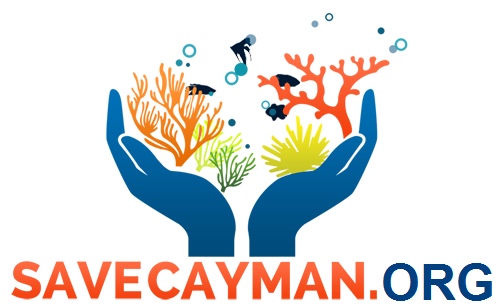Marine Life & Conservation
Head of Cayman Islands Department of Environment Urges Extreme Caution before Moving Forward with Controversial Cruise Berthing Plan
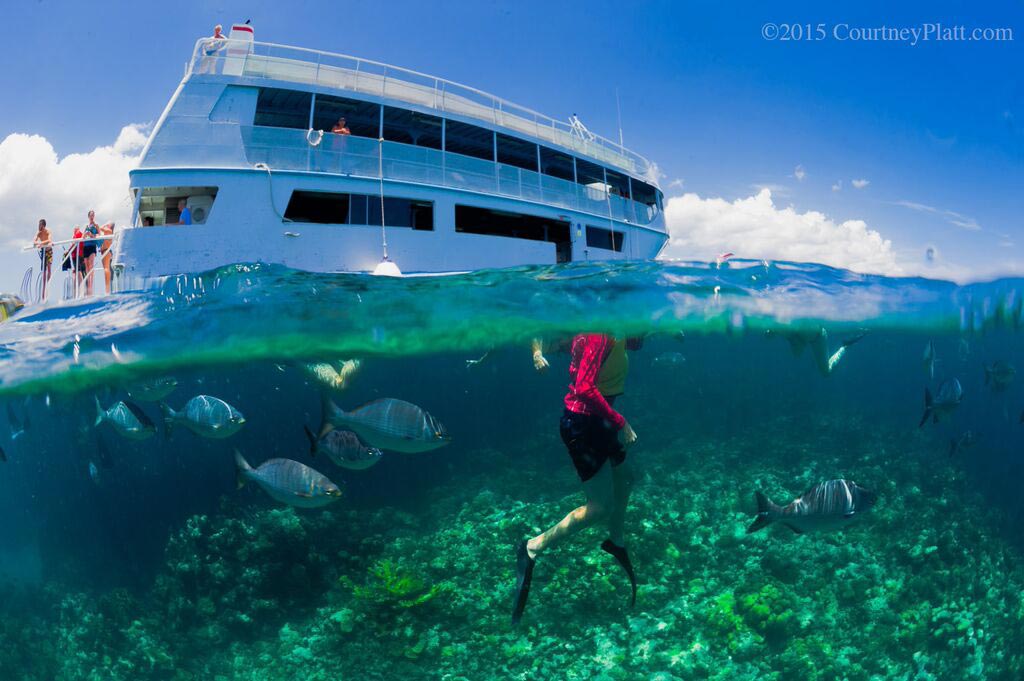
Since its release in early June, an Environmental Impact Statement (EIS) has been at the center of the heated debate over economic and environmental costs associated with the proposed port in George Town Harbor. Director of the Cayman Islands Department of the Environment Gina Ebanks-Petrie, who also headed the Environmental Assessment Board (EAB) that coordinated the impact study, is urging extreme caution before moving ahead with the project and pleading with decision makers and the public to take a closer look at what’s at stake.
The EIS projects that 15 acres of protected coral reefs will be destroyed by construction and dredging, and another 15 acres are at risk. Lost will be the exceptional underwater visibility that Cayman is world-renowned for. George Town Harbour is one of the few working ports in the Caribbean, if not the only one, with crystal clear water and vibrant coral reefs within easy access of the cruise ships’ anchorage.
The reefs, which include Soto’s Reef, Eden Rock and the Wreck of the Balboa, are so unique because it is rare to find such well developed, high relief reefs so close to, and easily accessible from shore. These reefs have also been protected under the Marine Parks system for over 25 years so fish life is abundant and diverse. These are two of the main factors which contribute to a bustling watersports scene in the harbor. Scuba diving, snorkeling, submarine trips, glass bottom boat excursions are offered primarily for cruise ship passengers.
“If the additional 15 acres of reefs disappear, or are no longer useable because they are dead or water clarity is so poor, it will be extremely difficult to find other similar sites which could easily absorb the displaced businesses and visitors, particularly given the cruise ships’ limited time in port,” says Ebanks-Petrie. “Possible alternative options for snorkeling, like Stingray City, are already over-subscribed and under tremendous stress as a result.”
The loss of these reefs has huge implications for the Cayman Islands on an international level. The Department of Environment has heard from international agencies and individuals during the public consultation process, and Gina Ebanks-Petrie says the vast majority urged the country not to proceed with the project because of the permanent and irreversible damage. For example, the President and CEO of PADI Worldwide “implores the Cayman Islands Government to cease plans to initiate this project and seek alternative solutions to mitigate the situation and not destroy the priceless natural underwater assets belonging to Grand Cayman Island”.
“In addition to the obvious impact of the loss of these world-famous dive sites on our dive tourism product, the biggest impact will likely be on our reputation as a jurisdiction with a long history of valuing and prioritizing the protection of its marine environment,” she said.
“Coral reefs all over the world are under serious threat on various fronts: coastal development, over-fishing, sedimentation, climate change, etc. Marine scientists are agreed that we need to take all possible steps to protect remaining reefs at the same time as taking corrective action to address the threats, both locally and globally,” added the DOE director.
Cayman’s watersports operators and local environmentalists, alarmed by the projected damage to the reefs and dive sites have organized under the banner of SaveCayman.org to fight the project and raise awareness in the community. Dock supporters point to mitigation options outlined in the EIS report, but Ebanks-Petrie cautions against misinterpreting the report.
“The pro-port side seems to take comfort from these mitigation options, but what is being missed, or glossed over, is that the environmental study also assesses the effect of those measures, and the consultants judge that they will have little or no effect on reducing the severity of the impacts,” she said. “The public and decision makers need to remember that “mitigation” of an impact does not equal complete removal of the impact, and they should focus on the severity of the predicted residual impact i.e. those impacts which remain even after the use of mitigation measures.”
“For example, the consultants score the impact of dredging on water quality in George Town Harbour (GTH) as a Significant negative impact (-D) and this remains a Significant Negative impact (-D) after the application of the recommended mitigation measure – the installation of silt curtains,” she explains. The same applies to the possible relocation of the historic Wreck of the Balboa.
Consultants classify the destruction of coral reef during dredging in the highest tier of negative impacts – a Major negative impact (-E). Following implementation of the recommended mitigation measure – the coral relocation programme – it is still classified as a Significant Negative Impact (-D).
“Even with these proposed mitigation measures, that come with a significant price tag, the resulting situation is still extremely dire, and this seems to be lost in the sound bites being heard in the news,” said Ebanks-Petrie.
“The Department of Environment fully acknowledges the contribution that cruise tourism makes to the economy, and the need to upgrade and improve the arrival and departure experience of cruise visitors. However, after careful consideration of the environmental losses and the risk to the overall tourism product associated with berthing facilities, our view is that a scheme of appropriate landside enhancements would offer the best solution.”
Ebanks-Petrie says the Environmental Statement has attempted to place a dollar value on the economic losses associated with the destruction of the George Town Harbour reefs and the Statement recommends that these preliminary estimates are appropriately incorporated into the updated Business Case.
“The Environmental Impact Assessment and Environmental Assessment Board’s review of it are stunningly clear and shows that the government should not approve the plan as described,” says Dr. Ellen Prager, marine scientist and author who has been outspoken against the project. “The reefs and the wreck lost to dredging and sedimentation associated with dredging cannot be relocated or transplanted, and it is unclear what other unintended consequences to other nearshore habitats and environments will occur.”
Ebanks-Petrie says moving forward, given the projected cost of the project, it is critical that the predicted economic benefits of the berthing facility are based on real data and factual information and that the economic business case does not rely solely on assumptions, speculation and the opinions of those persons directly involved in the cruise tourism industry.
“From where I sit, the economic business case does not appear to have been held to the same standard of actual data collection and robust analysis and scrutiny as the environmental impact assessment; I see this as a significant problem for decision-makers,” said the head of the Department of Environment.
“It is our mission to inform and educate the public about Cayman’s fragile environment and to try to ensure that decisions made today, which will impact future generations, are based on accurate facts,” says Keith Sahm who is spearheading Save Cayman. “Once the decision is made, Cayman will have to deal with the consequences.”
About Save Cayman
Save Cayman (www.savecayman.org) is a grassroots organization of individuals who share a mission to protect the underwater environment of the Cayman Islands, while promoting sustainable tourism for future generations. It was formed by concerned individuals responding to an Environmental Impact Assessment (EIA) that projected the destruction of coral reefs in advance of the government-proposed cruise berthing facility in George Town harbour.
Blogs
The Ocean Cleanup Breaks 10,000,000 KG Barrier

The Ocean Cleanup, the global non-profit project, has removed a verified all-time total of ten million kilograms (22 million lbs.) of trash from oceans and rivers around the world – approximately the same weight as the Eiffel Tower.
To complete its mission of ridding the oceans of plastic, The Ocean Cleanup uses a dual strategy: cleaning up the Great Pacific Garbage Patch (GPGP) to remove the plastic already afloat in the oceans, while stopping the flow of plastic from the world’s most polluting rivers.
Through cleaning operations in the GPGP and in rivers in eight countries, the cumulative total of trash removed has now surpassed ten million kilograms. This milestone demonstrates the acceleration of The Ocean Cleanup’s impact, while underlining the astonishing scale of the plastic pollution problem and the need for continued support and action.
While encouraging for the mission, this milestone is only a staging point: millions more tons of plastic still pollute our oceans and The Ocean Cleanup intends to continue learning, improving and innovating to solve this global catastrophe.
This announcement comes as governments from around the world meet to continue negotiations to develop a new legally binding instrument to end plastic pollution at INC4 in Ottawa, Canada. Representatives of The Ocean Cleanup will be in attendance and the organization will be urging decision-makers to collaborate towards a comprehensive and ambitious global treaty which addresses plastic at all stages of its life cycle and in all marine environments worldwide, including in areas beyond national jurisdiction.
It is encouraging to see that the need for remediation is reflected in the various options for potential treaty provisions. It is essential that the final treaty contains clear targets for the remediation of legacy plastic pollution, and reduction of riverine plastic emissions.
Tackling plastic pollution requires innovative and impactful solutions. The treaty should therefore incentivize the innovation ecosystem by fostering innovations that make maximal use of data, technology and scientific knowledge – such as those designed and deployed by The Ocean Cleanup.
‘After many tough years of trial and error, it’s amazing to see our work is starting to pay off – and I am proud of the team who has brought us to this point.’ said Boyan Slat, Founder and CEO of The Ocean Cleanup. ‘While we still have a long way to go, our recent successes fill us with renewed confidence that the oceans can be cleaned.’
The Ocean Cleanup was founded in 2013 and captured its first plastic in 2019, with the first confirmed catch in the GPGP coming soon after the deployment of Interceptor 001 in Jakarta, Indonesia. After surpassing one million kilograms of trash removed in early 2022, the non-profit project has since progressed to the third iteration of its GPGP cleaning solution, known as System 03, and a network of Interceptors currently covering rivers in eight countries, with more deployments set for 2024.
About The Ocean Cleanup
The Ocean Cleanup is an international non-profit organization that develops and scales technologies to rid the world’s oceans of plastic. They aim to achieve this goal through a dual strategy: stemming the inflow via rivers and cleaning up the legacy plastic that has already accumulated in the ocean. For the latter, The Ocean Cleanup develops large-scale systems to efficiently concentrate the plastic for periodic removal. This plastic is tracked and traced through DNV’s chain of custody model to certify claims of origin when recycling it into new products. To curb the tide via rivers, The Ocean Cleanup has developed Interceptor™ solutions to halt and extract riverine plastic before it reaches the ocean. Founded in 2013 by Boyan Slat, The Ocean Cleanup now employs a broadly multi-disciplined team of approximately 140. The foundation is headquartered in Rotterdam, the Netherlands.
For more information, visit: theoceancleanup.com and follow @theoceancleanup on social media.
Marine Life & Conservation
Steve Backshall to headline Shark Trust’s flagship event: For the Love of Sharks

Join a host of amazing, shark loving, speakers including Steve Backshall and the Shark Trust team for an evening celebrating shark conservation at the Royal Geographical Society in London this November.
Date: 29th November 2024
Time: 6-10pm
Location: Royal Geographical Society, London
Tickets: https://www.sharktrust.org/Event/flos24
The event will be a celebration of all things shark. Those lucky enough to get hold of tickets will hear from engaging guest speakers with a passion for sharks.
The line-up includes (*subject to change if unforeseen circumstances arise)
Steve Backshall: One of television’s busiest presenters, BAFTA award-winning wildlife expert Steve has been passionate about the wild world ever since he was young.
Steve’s impressive TV career has taken him all around the world, investigating a wide array of species and environments. Steve has filmed over 100 hours of children’s wildlife programmes with the BAFTA award winning Deadly 60 franchise and recently, with Sky Nature, for his new series ‘Whale with Steve Backshall’. He has been a patron for the Shark Trust for 10 years.
Simon Rogerson: is a photojournalist specialising in natural history, diving and the sea.
He is editor of SCUBA magazine, the official journal of the British Sub-Aqua Club. Simon started his career as a crime reporter but gravitated towards his ‘less depressing’ interest in underwater exploration, joining the staff of DIVE magazine in 1999. In 2005 he was named ‘Editor of the Year’ in the PPA’s Independent Publishing Awards. Simon also works as a freelance writer, contributing frequently to the Sunday Times and Telegraph, in addition to BBC Wildlife, Esquire, and a host of international diving magazines. He is the author of a book, Dive Red Sea, published by Ultimate Sports. Now based in Berkshire, Simon has been a Patron of the Shark Trust for 20 years.
More speakers to be announced soon. Head to the Shark Trust website to learn more.
The evening will also allow guests the final chance to see the Oceanic 31, shark art exhibition. Some of the artwork will be auctioned/raffled at the event, while the rest will be auctioned online to raise money for the Shark Trust Oceanic Programme.
For the Love of Sharks is an evening with something for everyone who is interested and fascinated by sharks. Join the Shark Trust, their Patrons, Trustees and Staff, along with a host of supporters for this celebration of shark conservation.
For more information or to buy a ticket: https://www.sharktrust.org/Event/flos24
-

 News3 months ago
News3 months agoCapturing Critters in Lembeh Underwater Photography Workshop 2024: Event Roundup
-

 Marine Life & Conservation Blogs3 months ago
Marine Life & Conservation Blogs3 months agoCreature Feature: Swell Sharks
-

 Blogs2 months ago
Blogs2 months agoMurex Resorts: Passport to Paradise!
-

 Gear Reviews3 weeks ago
Gear Reviews3 weeks agoGEAR REVIEW – Revolutionising Diving Comfort: The Sharkskin T2 Chillproof Suit
-

 Blogs3 months ago
Blogs3 months agoDiver Discovering Whale Skeletons Beneath Ice Judged World’s Best Underwater Photograph
-

 Gear Reviews3 months ago
Gear Reviews3 months agoGear Review: Oceanic+ Dive Housing for iPhone
-

 News2 months ago
News2 months agoPADI Teams Up with Wellness Brand Neuro to Drive Ocean Change and Create a Blue State of Mind
-

 Marine Life & Conservation2 months ago
Marine Life & Conservation2 months agoSave the Manatee Club launches brand new webcams at Silver Springs State Park, Florida


